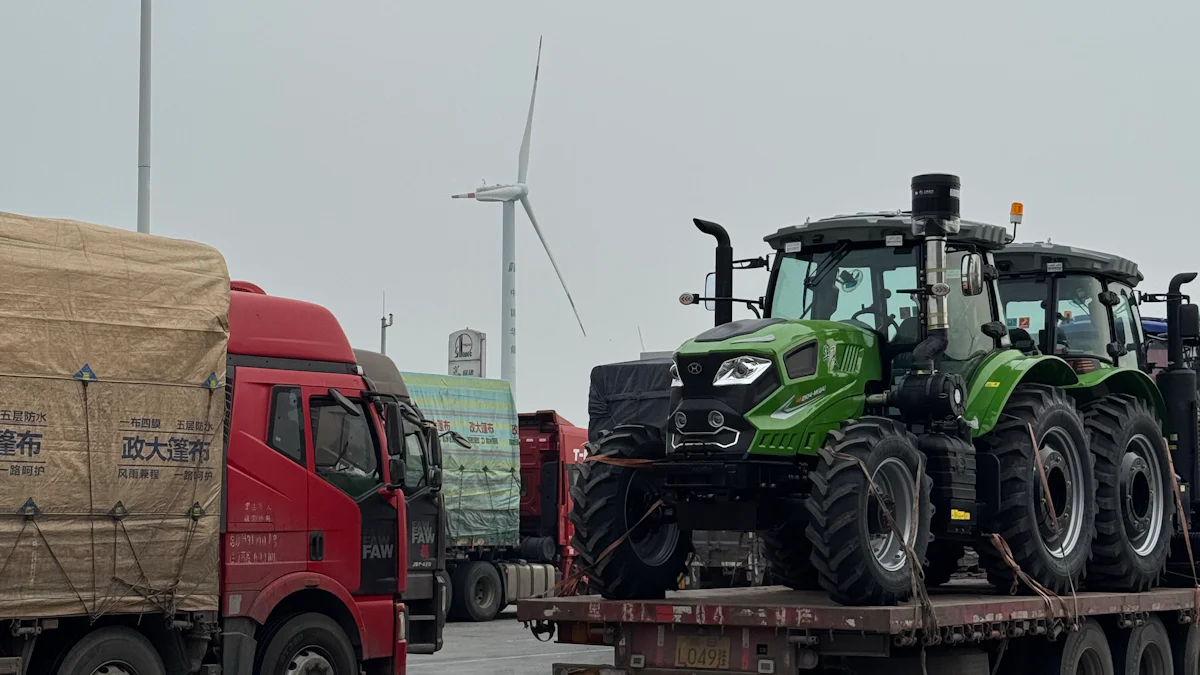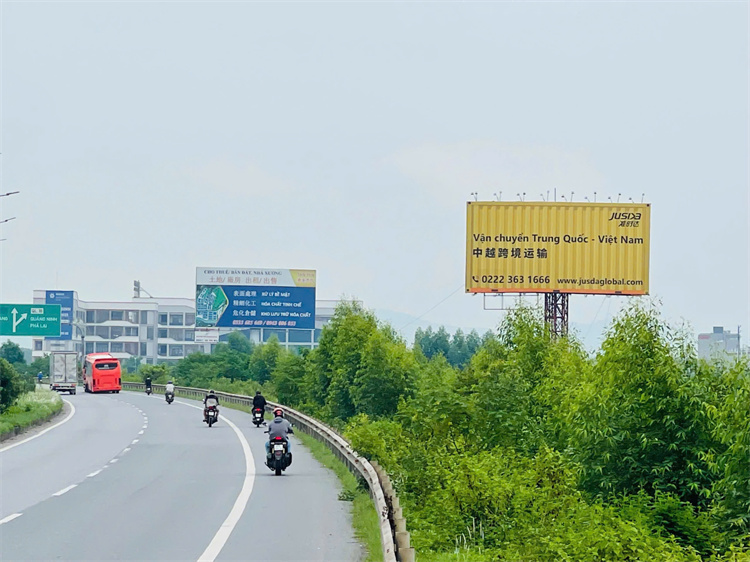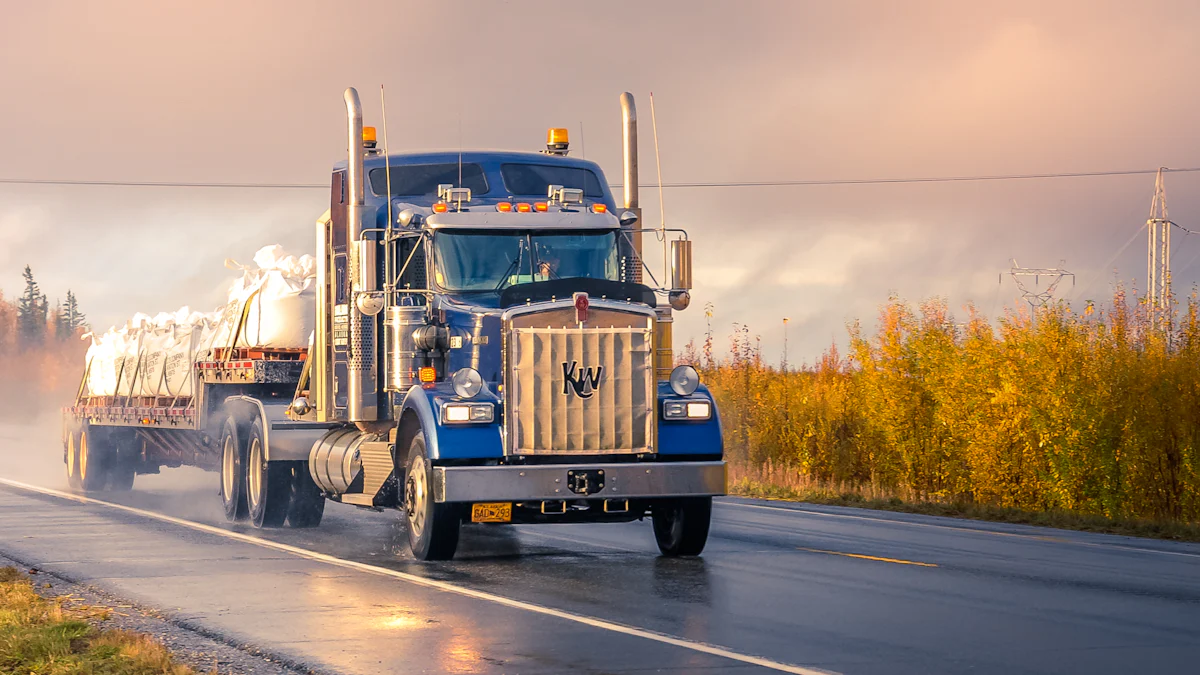China-Vietnam Cross-border Land Transport Explained

China-Vietnam Cross-border Land Transport plays a pivotal role in the economic landscape of Southeast Asia. The trade turnover between these two nations reached an impressive 171.2 billion USD last year, highlighting the significance of this transport corridor. Vietnam's strategic location as a gateway to the Indochina region enhances its geographical importance. Companies like JUSDA Vietnam, with over 15 years of experience, provide comprehensive logistics services, ensuring efficient and reliable transport solutions. Their expertise in handling diverse goods and seamless customs processes underscores the critical nature of cross-border transport in fostering economic growth.
China-Vietnam Cross-border Land Transport

Modes of Transport
Trucking Services
Trucking services form a crucial component of China-Vietnam Cross-border Land Transport. Companies like Extrans Global offer comprehensive cross-border trucking services, including Vietnam long-distance trucking and cargo tracking. These services focus on reducing logistics costs, ensuring timely delivery, and enhancing cargo security. The road network between China and Vietnam facilitates efficient movement of goods, making trucking a preferred mode for many businesses. The stability and reliability of long-distance inland trucking provide a robust solution for transporting goods across the border.
Rail Services
Rail services also play a significant role in the China-Vietnam Cross-border Land Transport landscape. The Vietnam-China-Europe Railway Express, offered by companies such as JUSDA Vietnam, provides an efficient and cost-effective land transport option. This rail service connects major economic hubs, facilitating seamless movement of goods across borders. The railway infrastructure supports large volumes of cargo, making it an attractive choice for businesses looking to optimize their supply chain operations. The growing importance of cross-border freight train services highlights the potential of rail transport in enhancing trade efficiency between the two nations.
Key Players in China-Vietnam Cross-border Land Transport
JUSDA Vietnam
JUSDA Vietnam stands out as a key player in the China-Vietnam Cross-border Land Transport sector. With over 15 years of experience, the company offers a comprehensive range of transportation services, including air freight, sea freight, and trucking services. JUSDA Vietnam's expertise in logistics planning and execution ensures seamless international shipping solutions. The company's self-owned customs team facilitates smooth and efficient clearance processes, further enhancing its reliability as a logistics partner.
JUSDA Vietnam's multilingual capabilities in Chinese, English, and Vietnamese enable effective communication with diverse client bases. The company specializes in handling both new and used equipment, as well as sensitive materials like electronics and automobiles. Its off-terminal operations ensure the shortest cargo handover times, providing quick and reliable delivery. The close relationship with customs authorities allows JUSDA Vietnam to deliver exceptional service, making it a trusted partner for businesses aiming to streamline their logistics operations.

JUSDA Solutions
To provide you with professional solutions and quotations.
Challenges in Cross-border Transport
Infrastructure Issues
Road and Rail Infrastructure
China-Vietnam Cross-border Land Transport faces significant challenges due to infrastructure. The road and rail networks between these two nations require substantial improvements to meet the growing demand for efficient transport. Many roads suffer from inadequate capacity and poor conditions, which hinder the smooth flow of goods. Rail infrastructure also needs upgrades to support the increasing volume of cargo. Companies like JUSDA Vietnam, with their expertise in logistics, emphasize the importance of robust infrastructure for seamless cross-border operations.
Maintenance and Upgrades
Regular maintenance and timely upgrades are crucial for the sustainability of China-Vietnam Cross-border Land Transport. The lack of consistent maintenance leads to deteriorating road conditions, causing delays and increasing transportation costs. Rail systems also require modernization to enhance their efficiency and reliability. Investment in infrastructure maintenance and upgrades can significantly improve the overall transport experience, benefiting businesses and boosting trade between China and Vietnam.
Border Congestion
Causes of Congestion
Border congestion poses a major challenge in China-Vietnam Cross-border Land Transport. Several factors contribute to this issue, including inefficient customs procedures and limited border facilities. High traffic volumes at key crossing points exacerbate the problem, leading to long wait times for trucks and trains. JUSDA Vietnam's self-owned customs team plays a vital role in mitigating these challenges by ensuring smooth and efficient clearance processes.
Impact on Transport Efficiency

Congestion at the border significantly impacts the efficiency of China-Vietnam Cross-border Land Transport. Delays caused by congestion increase transit times and disrupt supply chains, affecting businesses that rely on timely deliveries. The resulting inefficiencies lead to higher logistics costs and reduced competitiveness in the market. Addressing border congestion through improved infrastructure and streamlined customs procedures is essential for enhancing transport efficiency and supporting economic growth in the region.
Efforts to Improve Cross-border Transport
Government Initiatives
Policy Reforms
Governments of China and Vietnam have implemented policy reforms to enhance cross-border transport. These reforms aim to streamline customs procedures, reducing the time and costs associated with clearance processes. By adopting advanced information technology, authorities improve the efficiency of goods and vehicle clearance at the border. This approach not only addresses logistical challenges but also supports enterprises in accessing timely information for cross-border transport activities.
Infrastructure Investments
Infrastructure investments play a crucial role in improving cross-border transport between China and Vietnam. Both countries have committed to upgrading road and rail networks to accommodate the increasing volume of trade. These investments focus on expanding capacity and enhancing the quality of transport routes. Improved infrastructure facilitates smoother movement of goods, reducing delays and transportation costs. Such developments are essential for sustaining economic growth and competitiveness in the region.
Private Sector Contributions
Innovations in Logistics
The private sector contributes significantly to cross-border transport improvements through innovations in logistics. Companies like JUSDA Vietnam leverage their expertise to offer comprehensive logistics solutions tailored to client needs. Their freight management services ensure seamless planning and execution, optimizing supply chain operations. By utilizing state-of-the-art technology, these companies enhance cargo security and efficiency, providing reliable transport solutions for businesses.
Partnerships and Collaborations
Partnerships and collaborations among logistics providers and other stakeholders drive advancements in cross-border transport. Companies form strategic alliances to share resources and expertise, fostering innovation and efficiency. These collaborations enable the development of integrated transport solutions that address complex supply chain requirements. By working together, businesses can overcome challenges and capitalize on opportunities in the cross-border transport market.
The China-Vietnam cross-border land transport sector plays a crucial role in the economic development of Southeast Asia. Key players like JUSDA Vietnam, with their extensive logistics expertise, ensure efficient and reliable transport solutions. The future of cross-border transport in this region looks promising, with trends pointing towards diversification of transportation methods and reduced reliance on road transport. The launch of the first international freight train between Shijiazhuang and Hanoi in July 2023 marks a significant milestone. Continued cooperation between professional associations and investment in infrastructure will further enhance the efficiency and effectiveness of cross-border transport.
See Also
Ready to Explore: The Latest in Supply Chain Transport Tech
Revolutionary Approaches: Revealing Cross-Border E-commerce Supplier Bonds
Unleashing Triumph in Cross-Border Commerce via JUSDA
